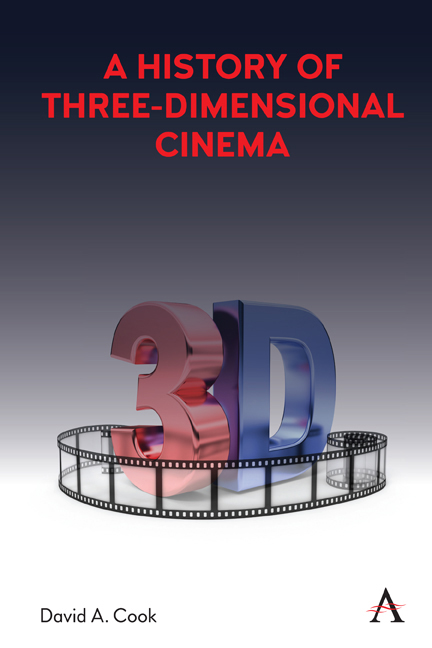Book contents
- Frontmatter
- Dedication
- Content
- List of Figures
- Acknowledgements
- Prefatory Note/Introduction
- 1 “A New Way to Simulate Presence”: The Foundations of Stereoscopic Entertainment, 1427–1888
- 2 “A Very Vivid Impression of Movement”: Early 3D Cinema, 1895–1952
- 3 “See It in 3 Dimension!”: The First Hollywood 3D Boom, 1952–55
- 4 Stereoscopic Revival, 1970–85
- 5 The Age of IMAX, or the “Immersive Cinema,” 1986–2009
- 6 The Blockbuster Years: Digital 3D, 2010–20
- 7 “A Different Kind of Mental Image”: Some Aesthetic Considerations about 3D
- 8 “Experience on Demand”: Virtual Reality
- 9 Conclusion
- 3D Discography: Discs Viewed or Sampled in Preparation for This Book
- Selected Bibliography
- Index
1 - “A New Way to Simulate Presence”: The Foundations of Stereoscopic Entertainment, 1427–1888
Published online by Cambridge University Press: 22 October 2021
- Frontmatter
- Dedication
- Content
- List of Figures
- Acknowledgements
- Prefatory Note/Introduction
- 1 “A New Way to Simulate Presence”: The Foundations of Stereoscopic Entertainment, 1427–1888
- 2 “A Very Vivid Impression of Movement”: Early 3D Cinema, 1895–1952
- 3 “See It in 3 Dimension!”: The First Hollywood 3D Boom, 1952–55
- 4 Stereoscopic Revival, 1970–85
- 5 The Age of IMAX, or the “Immersive Cinema,” 1986–2009
- 6 The Blockbuster Years: Digital 3D, 2010–20
- 7 “A Different Kind of Mental Image”: Some Aesthetic Considerations about 3D
- 8 “Experience on Demand”: Virtual Reality
- 9 Conclusion
- 3D Discography: Discs Viewed or Sampled in Preparation for This Book
- Selected Bibliography
- Index
Summary
Stereoscopic prehistory
Most of us see the world in three dimensions. This is so primarily because humans possess binocular vision, although other factors such as foreground overlap, gradient texture, and relative size are important to depth perception too. (For example, the illusion of depth on the flat surfaces of paintings, drawings, and photographs depends on the replication of these alternate depth cues through the system of linear perspective.) Because our two eyes are aligned so that their fields of vision partially overlap, causing a slight parallax in which each eye sees objects from a slightly different point of view, their combination in our minds creates binocular vision. The distance between the two eyes of a normal adult is almost invariably 6.5 cm, and this binocular disparity provides cues that the brain automatically interprets as depth.
Humans since ancient times have also been understood as beings who create and manipulate signs—things that take the place of or stand for other things. We are the “representational animal,” or animal symbolicum in the term of early twentieth-century philosopher Ernst Cassirer. Representation (or “re-presentation”), significantly, is the central characteristic of art. So, it is not unnatural that three-dimensional representation would become an important issue for aesthetics early in our history. By the middle Renaissance, such concerns were manifest in the development of linear perspective in painting and drawing, as noted above; the disposition of scenographic space in the theater; and the manipulation of spatial perspective in landscape architecture, sculpture, and bas-relief. Contemporaneously, at the level of popular entertainment, a cultural precedent for three-dimensional cinema appeared in the form of the European peepshow, which in the eighteenth century spread to the United States, China, and Japan.
According to Richard Balzer, a peepshow is a closed or semi-closed box having at least one hole through which a perspective is seen, which may or may not use mirrors to create its illusion; the factor of enclosure is important, because it gives the viewer the sense of approaching an inaccessible space and seeing a hidden image, similar to the voyeuristic experience of watching a movie in a darkened theater. Its origin seems to date from the work of Italian painter and architect Leone Battista Alberti, who in 1437 developed an instrument to view perspectives through a small hole in a box.
- Type
- Chapter
- Information
- A History of Three-Dimensional Cinema , pp. 1 - 10Publisher: Anthem PressPrint publication year: 2021

